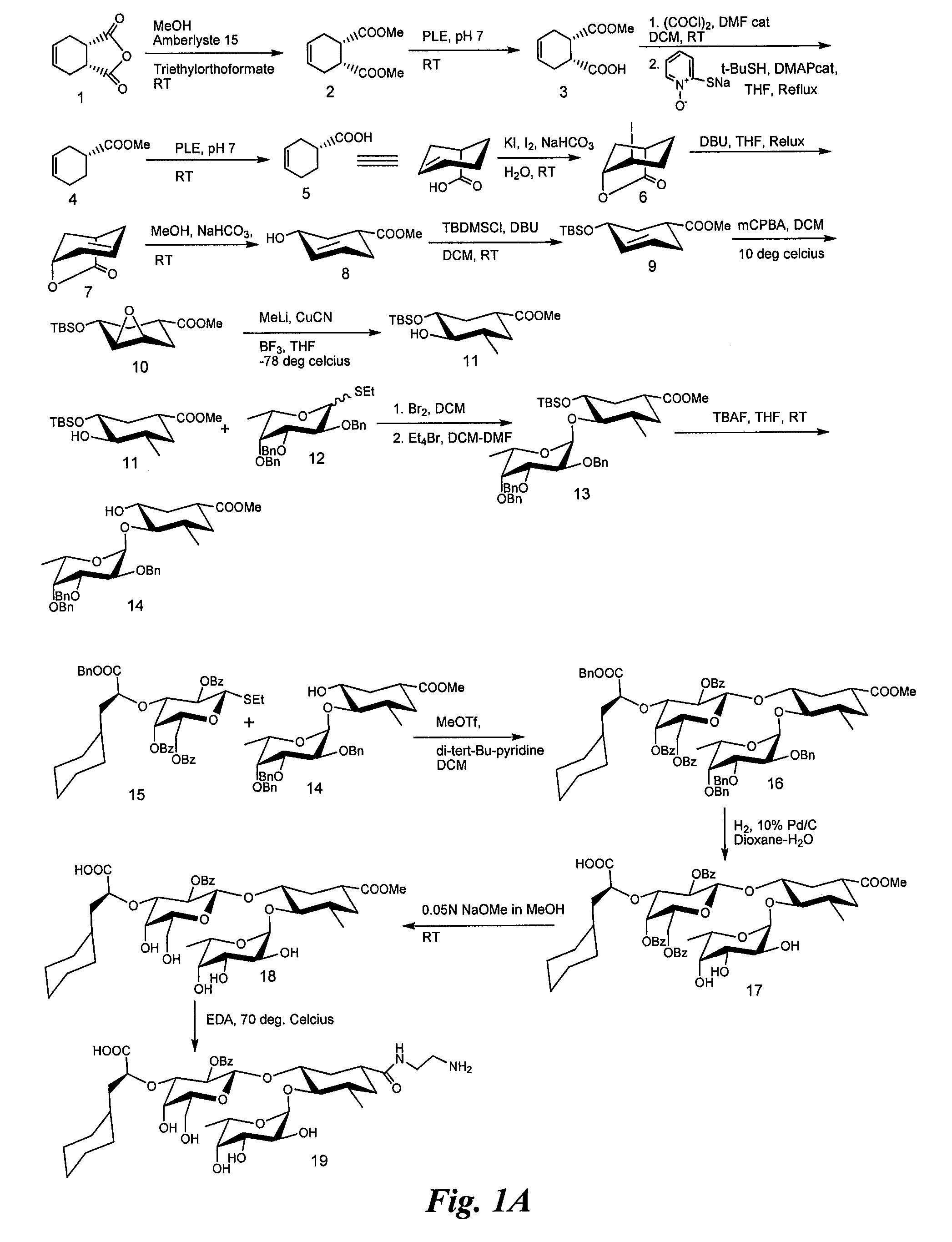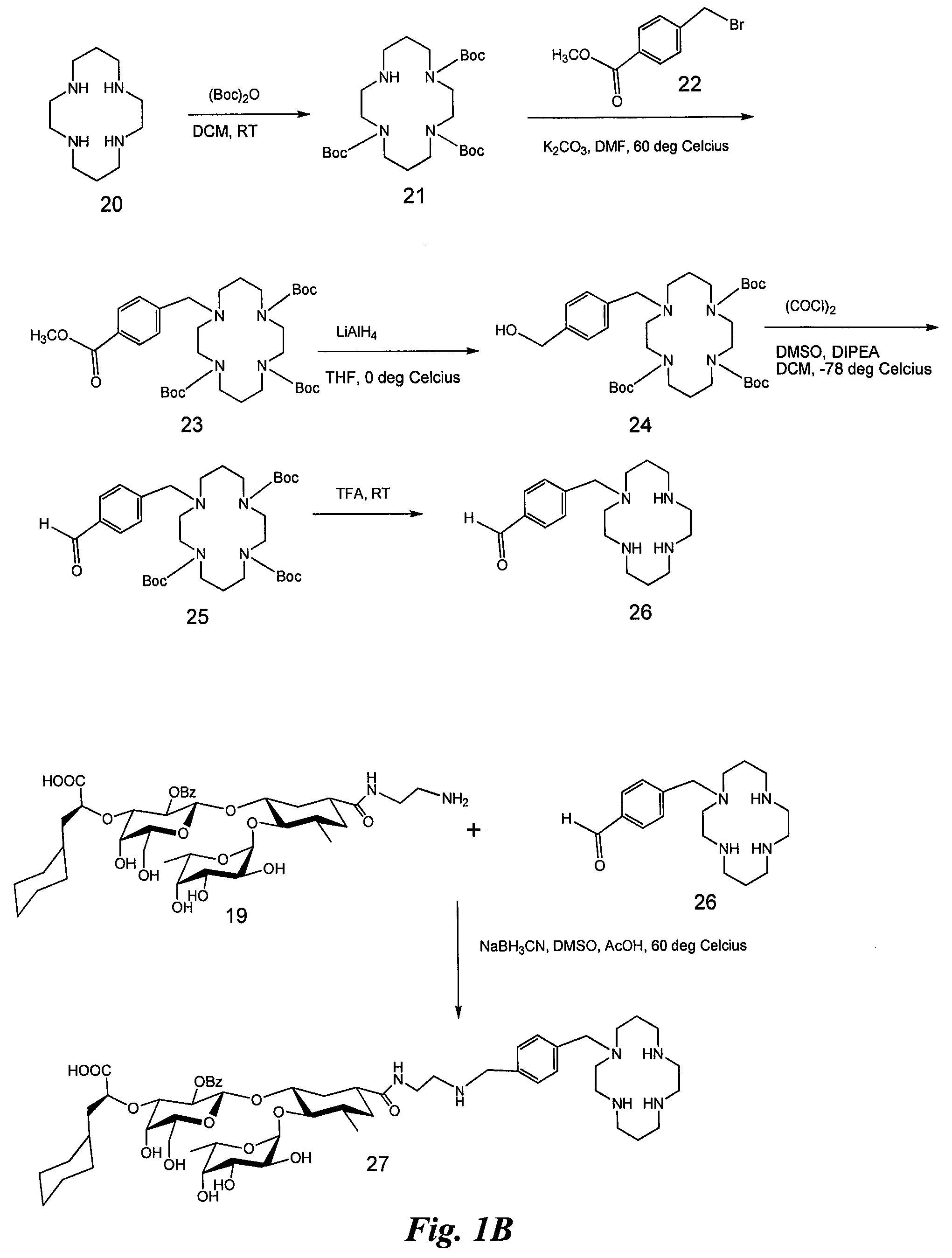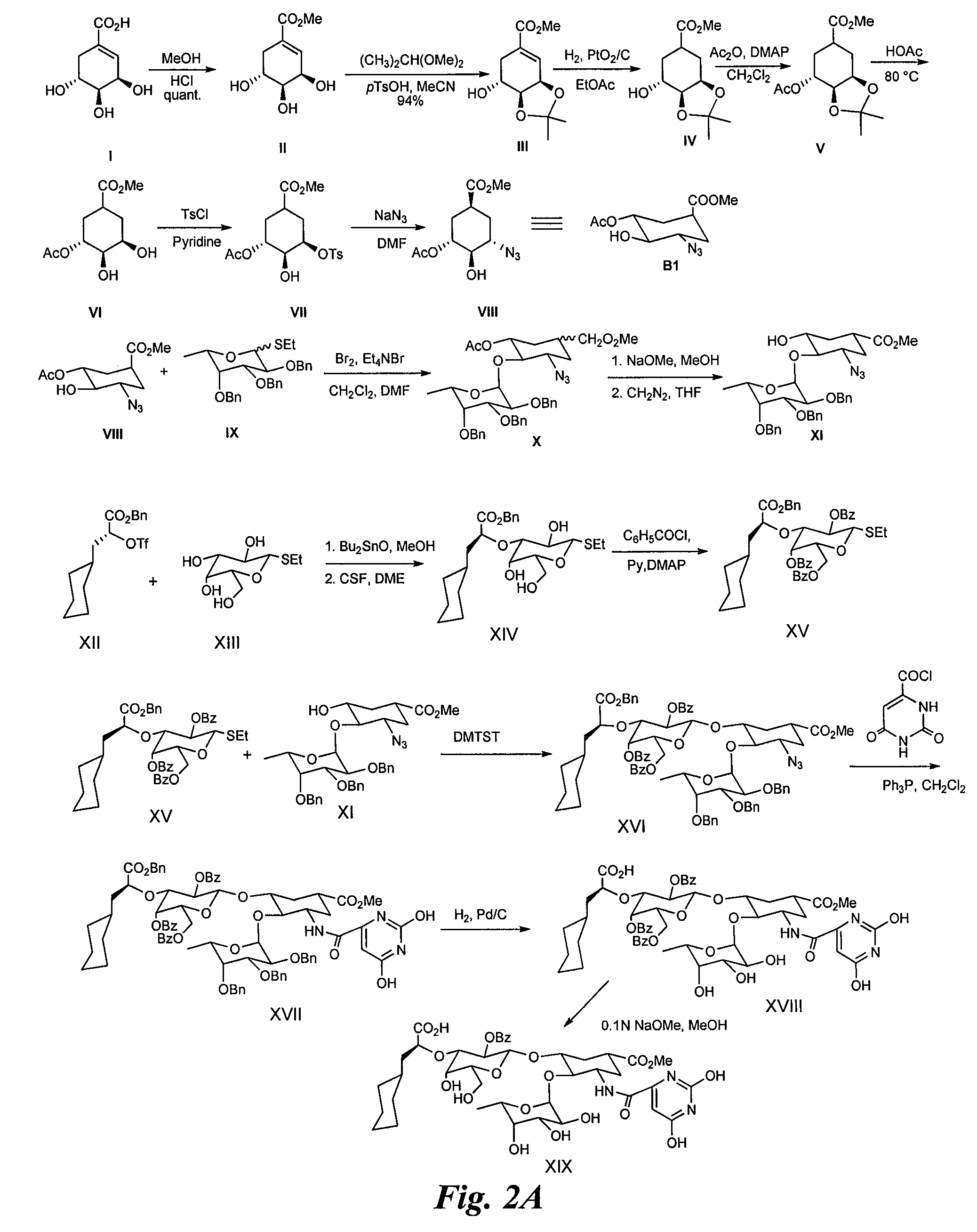Heterobifunctional inhibitors of E-selectins and CXCR4 chemokine receptors
a technology of cxcr4 and chemokine receptor, which is applied in the field of heterofunctional compounds, can solve the problems of reducing survival statistics, increasing the risk of treatment, and increasing the risk of cancer cells, so as to improve the survival rate, improve the effect of treatment, and enhance the retention of cells in the blood
- Summary
- Abstract
- Description
- Claims
- Application Information
AI Technical Summary
Benefits of technology
Problems solved by technology
Method used
Image
Examples
example 1
Synthesis of Heterobifunctional Compound #1 (Compound 27 of FIG. 1)
[0130]Synthesis of Compound 2:
[0131]Commercially available (Aldrich Chemical Co., Milwaukee, Wis.) cis-1,2,3,6-tetrahydrophthalic anhydride (compound 1, 50 g) is added to a suspension of amberlyste 15 (50 g, dried under vacuum) in methanol (1 L) with stirring. Triethylorthoformate (100 ml) is added immediately while stirring. The reaction mixture is then vigorously stirred for 5 days at room temperature and additional triethylorthoformate is added. Stirring is continued for an additional 4 days, then the reaction mixture filtered over celite and washed with methanol. The solvent is removed in vacuum and the residue is dissolved in CH2Cl2 (200 ml). The solution is washed with a cold saturated solution of NaHCO3 (200 ml) and cold brine (200 ml). The organic layer is dried (Na2SO4), filtered and concentrated to dryness to afford compound 2 (55 g).
[0132]Synthesis of Compound 3:
[0133]To a suspension of compound 2 (10 g) i...
example 2
Synthesis of Heterobifunctional Compound #2 (Compound 28 of FIG. 2)
[0174]Synthesis of Intermediate II:
[0175](−)-Shikimic acid (20 g) in MeOH (200 ml) and sulfuric acid (2 ml, 98%) are stirred at rt for 50 h. The reaction mixture is neutralized with 2N aqueous NaOH in the cold. After evaporation to dryness, the residue is purified by silica gel chromatography to afford II (19.2 g).
[0176]Synthesis of Intermediate (III):
[0177]Methyl shikimate (II, 10 g), 2,2 dimethoxypropane (10 ml) and p-TsOH (0.8 g) are dissolved in acetonitrile (125 ml) and stirred at rt for 1 h. The reaction mixture is then neutralized with triethylamine (2 ml) and evaporated to dryness. The residue is chromatographed on silica gel to yield III (11 g).
[0178]Synthesis of Intermediate IV:
[0179]The shikimic acid derivative III (10 g) and PtO2 / C (10%, 250 mg) in MeOH (40 ml) are hydrogenated at rt under vigorous stirring. After 16 h the reaction mixture is filtered over celite and evaporated to dryness. The residue is ...
example 3
Assay to Assess Binding of Compounds to CXCR4
Methods
[0206]The assay assesses the ability of glycomimetic compounds to inhibit binding of an anti-CXCR4 antibody conjugated to phycoerythrin (“PE”), to CXCR4 on the surface of SupT1 cells. SupT1 cells are a T lymphoblast derived from a lymphoblastic leukemia and constitutively express CXCR4 on the cell surface. The cells are purchased from ATCC (ATCC number CRL-1942). Anti-human CXCR4-phycoerythrin monoclonal antibody (anti-CXCR4-PE) is purchased from R&D Systems (catalog number FAB170P, clone 12G5). The cells are grown in RPMI 1640 medium supplemented with 10% FBS. Approximately 2×106 cells are washed three times by centrifuging the cells at 400×g for 10 minutes and the cell pellet is resuspended in PBS plus 0.05% BSA. After the third centrifugation, the cell pellet is resuspended in PBS plus BSA to a concentration of 5×105 cells per ml. To block non-specific binding, human 1 g is added to the cells to a concentration of 1 μg per 105 c...
PUM
| Property | Measurement | Unit |
|---|---|---|
| pH | aaaaa | aaaaa |
| pH | aaaaa | aaaaa |
| temperature | aaaaa | aaaaa |
Abstract
Description
Claims
Application Information
 Login to View More
Login to View More - R&D
- Intellectual Property
- Life Sciences
- Materials
- Tech Scout
- Unparalleled Data Quality
- Higher Quality Content
- 60% Fewer Hallucinations
Browse by: Latest US Patents, China's latest patents, Technical Efficacy Thesaurus, Application Domain, Technology Topic, Popular Technical Reports.
© 2025 PatSnap. All rights reserved.Legal|Privacy policy|Modern Slavery Act Transparency Statement|Sitemap|About US| Contact US: help@patsnap.com



